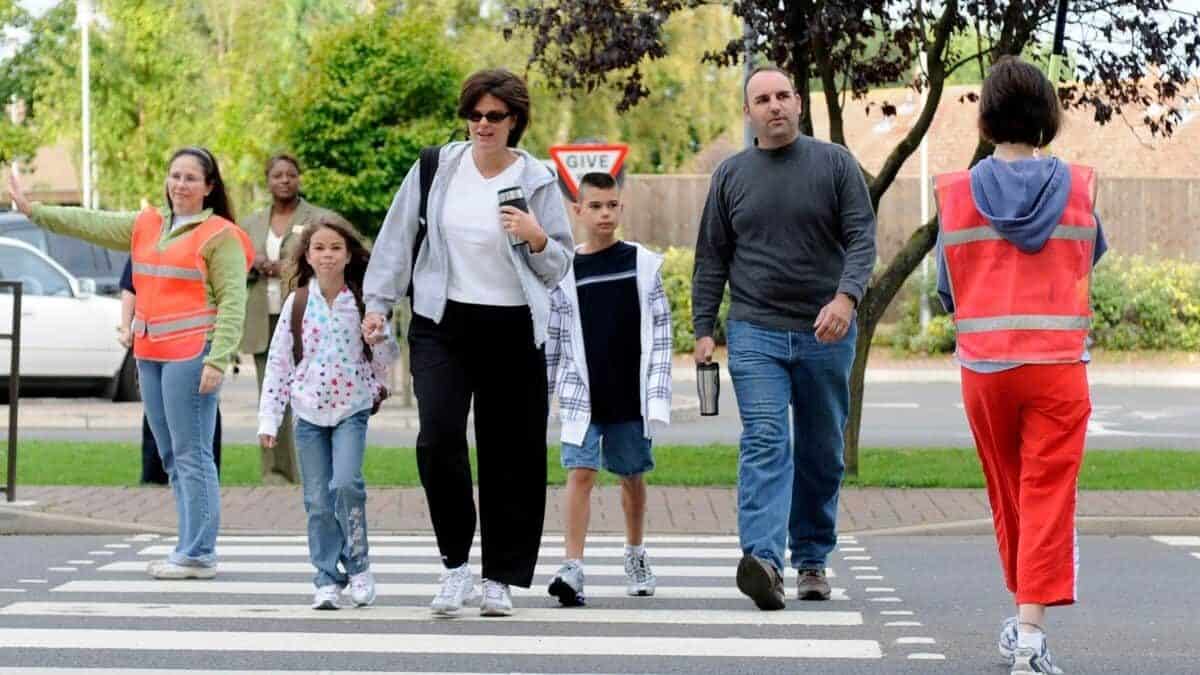The Green Cross Code is a simple guide to keep you safe on the roads – whether you’re in a car or on foot.
With so many cars, buses and lorries, it’s important to know how to cross the road safely. Everyone needs to know it – you, your friends, and even mum and dad!
- Find a safe place to cross – where there is a crossing nearby, make sure you use it. Otherwise make sure you choose a place where you can see everything on the road and everyone on the road can see you!
- Stop just before you get to the kerb – do not get too close to the traffic and make sure you can clearly see everything. If there is no pavement, keep back from the edge of the road whilst still making sure you can see approaching traffic
- Look all around and listen for traffic – traffic can come from any direction. Make sure you listen as well as look because sometimes you can hear traffic before you see it
- If a vehicle is coming, always let it pass, then look around again – do not cross until there is a safe gap in the traffic and you are certain there is plenty of time. Even if traffic is a long way off, it may be going very fast
- Finally, if all is clear, you can cross – when there is no traffic near, walk straight across the road, and always keep looking and listening for traffic while you cross
Different types of road crossings
There are several different types of road crossings. Knowing the difference between each will help you use them safely.
Zebra crossings
These are painted black and white on the road, and are marked with yellow lights on poles.
Cars should stop and wait for you to cross on a zebra crossing, but don’t step onto the road until the cars have stopped – they might not be able to stop in time.
Traffic lights
Stop and wait for the little green man. You should only start to cross the road when the green figure shows.
Remember that traffic lights may let traffic move in some lanes while traffic in other lanes has to wait, so make sure all of the cars on the road you’re crossing have stopped.
Pelican crossings
These are signal controlled crossings where you press the button, and get the traffic to stop for you!
Wait for the little green man, but don’t start to cross if he is already flashing, because soon the cars will start to move.
School crossing patrol
If there is a traffic warden, school crossing patrol or police officer there to help you cross the road, you should always cross in front of them and never before they tell you to, even if you think traffic has stopped.
The important thing to remember in all crossings is to concentrate on the road around you and to walk carefully when it is safe to cross.
Some extra useful tips!
Although following the Green Cross Code will keep you safe when crossing the road, there are other rules of the road that you should be aware of which will help keep you really safe:
- Never run! – when crossing the road never run because if you trip and fall over in the middle of the road, you could be in trouble!
- Beware the flashing green man! – at a crossing with lights, if the green man starts flashing on and off, don’t start to cross because it means there might not be time to get to the other side
- Walking on the right is right! – if you’re walking along a road with no footpath, try walking on the right of the road. That way you can see oncoming cars
- Take extra care at night – if it is dark, wear something bright and reflective so that you are easily seen by other people and cars
Don’t be scared of the roads
With all these guides and rules to remember, it may seem scary crossing roads and walking to school. However, walking is a really easy and great way to stay healthy. It also cuts down on car journeys too so it’s better for the planet and helps keep the local roads less busy.
If you want to walk to school, see if your school organises a walking bus. This is where groups of children walk to school together, accompanied by an adult.
And if there isn’t one already, how about setting one up?
A to Z of Food, Health and the Environment
Learn all about energy and the environment, how food is farmed, and get some great eco-tips!
More From A to Z of Food, Health and the Environment



